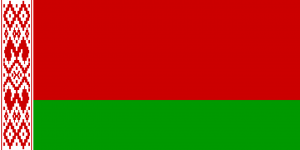Language/Belarusian/Grammar/Present-Tense
As a Belarusian language teacher of 20 years, I have taught many students how to conjugate verbs in the present tense. In this lesson, I will be sharing with you some useful tips and cultural insights to help you grasp this essential aspect of the Belarusian language.
What is the Present Tense?
The present tense in Belarusian is used to describe actions that are happening now or actions that happen habitually. It is an essential part of any language, and mastering it is crucial to understanding spoken and written communication.
In Belarusian, the present tense is formed by adding specific endings to the root of the verb, depending on the subject of the sentence. There are three different types of verbs in Belarusian, each with their own set of endings that must be added to the root of the verb.
First-Type Verbs
The first-type verbs in Belarusian are the most basic to conjugate in the present tense. They include such verbs as "to eat", "to drink", "to love", "to walk", and many others. To form the present tense with first-type verbs, you need to add the following endings to the verb root:
| Belarusian | Pronunciation | English |
|---|---|---|
| -у | -u | I do (verb) |
| -еш | -eš | You do (verb) |
| -е | -je | He/She/It does (verb) |
| -ем | -jem | We do (verb) |
| -ете | -jete | You (plural) do (verb) |
| -уць | -uc' | They do (verb) |
Here is an example of a first-type verb conjugated in the present tense.
| Belarusian | Pronunciation | English |
|---|---|---|
| есць | jeść | I eat |
| есцеш | ješeš | You eat |
| есце | ješe | He/She/It eats |
| едзім | jedzim | We eat |
| есцеце | ješec'e | You (plural) eat |
| едуць | jeduc' | They eat |
Second-Type Verbs
The second-type verbs in Belarusian end in either "-іць" or "-ыць" and are a bit trickier to conjugate in the present tense. These verbs include such words as "to write", "to read", "to think", and many others. To form the present tense with second-type verbs, you need to add the following endings to the verb root:
| Belarusian | Pronunciation | English |
|---|---|---|
| -у | -u | I do (verb) |
| -ыш | -yš | You do (verb) |
| -ыць | -yć | He/She/It does (verb) |
| -ім | -im | We do (verb) |
| -ыце | -yće | You (plural) do (verb) |
| -уць | -uc' | They do (verb) |
Here is an example of a second-type verb conjugated in the present tense.
| Belarusian | Pronunciation | English |
|---|---|---|
| пісаць | pisać | I write |
| пішыш | pišyš | You write |
| пішае | pišaje | He/She/It writes |
| пішэм | piš'em | We write |
| пішаце | pišace | You (plural) write |
| пішуць | pišuc' | They write |
Third-Type Verbs
The third-type verbs in Belarusian are the most complex to conjugate in the present tense. These verbs end in "-аць", "-яць", "-ець", or "-іць". Examples of third-type verbs include "to swim", "to be", "to go", and many others. To form the present tense with third-type verbs, you need to add the following endings to the verb root:
| Belarusian | Pronunciation | English |
|---|---|---|
| -у | -u | I do (verb) |
| -еш | -eš | You do (verb) |
| -е | -je | He/She/It does (verb) |
| -ем | -jem | We do (verb) |
| -еце | -ece | You (plural) do (verb) |
| -уць | -uc' | They do (verb) |
Here is an example of a third-type verb conjugated in the present tense.
| Belarusian | Pronunciation | English |
|---|---|---|
| ісці | isci | I go |
| ідзеш | idzeš | You go |
| ідзе | idze | He/She/It goes |
| ідзем | idzem | We go |
| ідзеце | idzec'e | You (plural) go |
| ідуць | iduc' | They go |
Tips for Learning the Present Tense
Conjugating verbs in the present tense is not an easy task, but it can be made simpler by applying some tips and tricks. Here are some of my recommendations:
- Practice, practice, practice! Try to use the present tense in your everyday conversations as much as possible. The more you use it, the easier it will become.
- Listen to Belarusian music and watch Belarusian movies. This will give you an idea of how the present tense is used in context.
- Make flashcards with the different verb endings and quiz yourself regularly.
- Use language learning apps and websites that can help you practice the present tense.
Conclusion
In this lesson, we have discussed the present tense in Belarusian and its three types of verbs. We have covered the specific verb endings that are used to form the present tense and given some tips for mastering this important aspect of the language.
Remember, practice is the key to success when it comes to learning a new language, so take the time to review and implement what you have learned. I wish you the best of luck on your language learning journey!
Related Lessons
- Personal Pronouns
- Plurals
- Adverbs
- Cases
- Negation
- Give your Opinion
- Possession
- Gender Agreement
- Comparatives
- Adjectives

